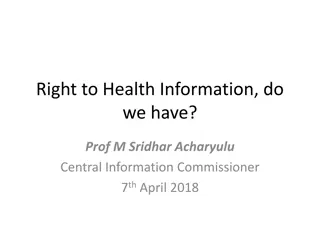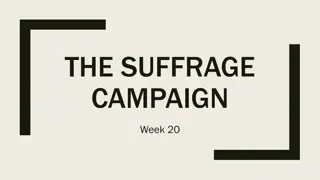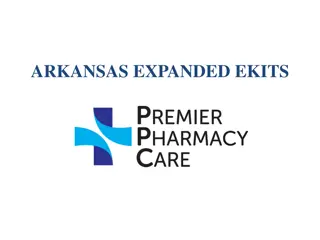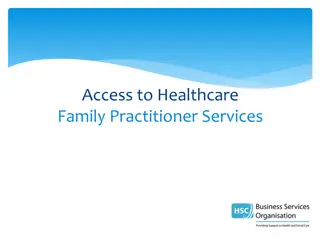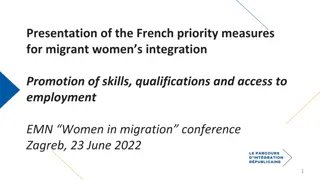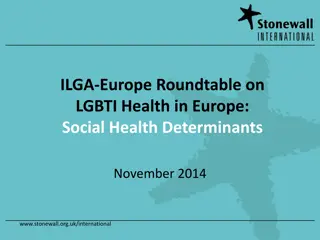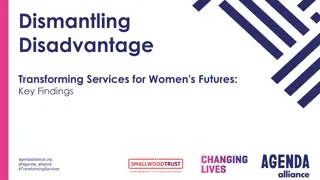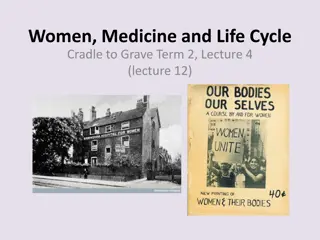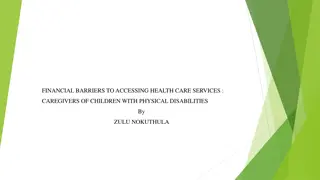Challenges Faced by Women in Accessing Healthcare Services
Women in the United States encounter various barriers in accessing healthcare, including higher costs compared to men, challenges in obtaining timely care, and lower likelihood of receiving preventive services when lacking a regular clinician. Despite decreases in uninsured rates, many women still forego necessary care due to financial constraints, leading to skipped medical tests and treatments. Younger women are at a higher risk of not having a regular healthcare provider, resulting in delays in seeking medical attention. Addressing these barriers is crucial to ensuring women receive the healthcare they need.
Download Presentation

Please find below an Image/Link to download the presentation.
The content on the website is provided AS IS for your information and personal use only. It may not be sold, licensed, or shared on other websites without obtaining consent from the author. Download presentation by click this link. If you encounter any issues during the download, it is possible that the publisher has removed the file from their server.
E N D
Presentation Transcript
Barriers to Care Experienced by Women in the United States Visualizing Health Policy Infographic Kaiser Family Foundation and JAMA June 2019
Women incur greater health care costs than men, particularly during the reproductive years Average health spending per capita, by age and gender, 2015 Women Men $9,489 $7,850 $5,908 $4,825 $4,717 $3,402 $2,518 $1,891 19 to 34 years 35 to 44 years 45 to 54 years 55 to 64 years SOURCE: Peterson-Kaiser Health System Tracker. Kaiser Family Foundation analysis of Medical Expenditure Panel Survey, Agency for Healthcare Research and Quality, U.S. Department of Health and Human Services.
Women are more likely to go without care because of cost, despite decreases in uninsured rates Share reporting that due to costs, in prior year they: Share who are uninsured: Women Men Women Men 23% 20% 18% 17% 15% 14% 12% 11% Skipped recommended medical test or treatment Didn't fill Rx or cut/skipped doses of medicine 2013 2018 NOTE: Among women and men ages 18-64. SOURCES: Centers for Disease Control and Prevention, Health Insurance Coverage Estimates from National Health Interview Survey. Kaiser Family Foundation, 2017 Kaiser Women s Health Survey and2017 Kaiser Men s Health Survey.
Younger women are more likely to say they do not have a regular clinician and did not obtain timely care as a result By age group, share of women reporting they: 18-25 26-34 35-44 45-54 55-64 36%* 31%* 20%* 17%* 16%* 14% 11%* 10% 10% 6% do not have a regular provider delayed care in prior 12 months because no regular provider NOTE: Among women ages 18-64. *Indicates a statistically significant difference from 55-64 years; p<.05. SOURCE: Kaiser Family Foundation, 2017 Kaiser Women s Health Survey.
Women who do not have a regular clinician are less likely to receive certain preventive services Has a regular clinician No regular clinician Share of women reporting that they recently had: 80% 75% 69% 56% 55% 53% 52% 45% 43% 38% Mammogram Pap test Talked to clinician about diet/ exercise/nutrition Talked to clinician about mental health issues Talked to clinician about smoking NOTE: Among women ages 18-64. Mammogram and pap in prior 2 years. Clinician counseling in past 3 years. SOURCE: Kaiser Family Foundation, 2017 Kaiser Women s Health Survey.
Women are more likely than men to have a pre- existing health condition and express concern about losing protections If there is no ban on pre-ex condition exclusions, share in 2018 who are worried they or family member will : Share with Declinable Pre-existing Conditions Under Pre-ACA Practices, 2015 Women Men 85% Pay more for health insurance All Women 29% 65% 67% All Men 24% Lose coverage 54% SOURCES: Kaiser Family Foundation analysis of data from National Health Interview Survey and the Behavioral Risk Factor Surveillance System, 2015. KFF Health Tracking Poll, August 2018.
Cost barriers to contraception have decreased for insured women since the ACA s contraceptive coverage requirement took effect 2017 2013 Insurance covered part of the cost, 19% Insurance covered part of the cost, 48% Insurance covered the full cost, 45% Other, 7% Insurance covered the full cost, 75% Other, 6% NOTES: Among privately insured women ages 18-44 who reported they used a prescription contraceptive in the past 12 months. Total may not add to 100% due to missing data. Includes oral contraceptives, long-acting reversible contraceptives, injections, patch, ring, among others. SOURCE: Kaiser Family Foundation, 2013 and 2017 Kaiser Women s Health Surveys.







